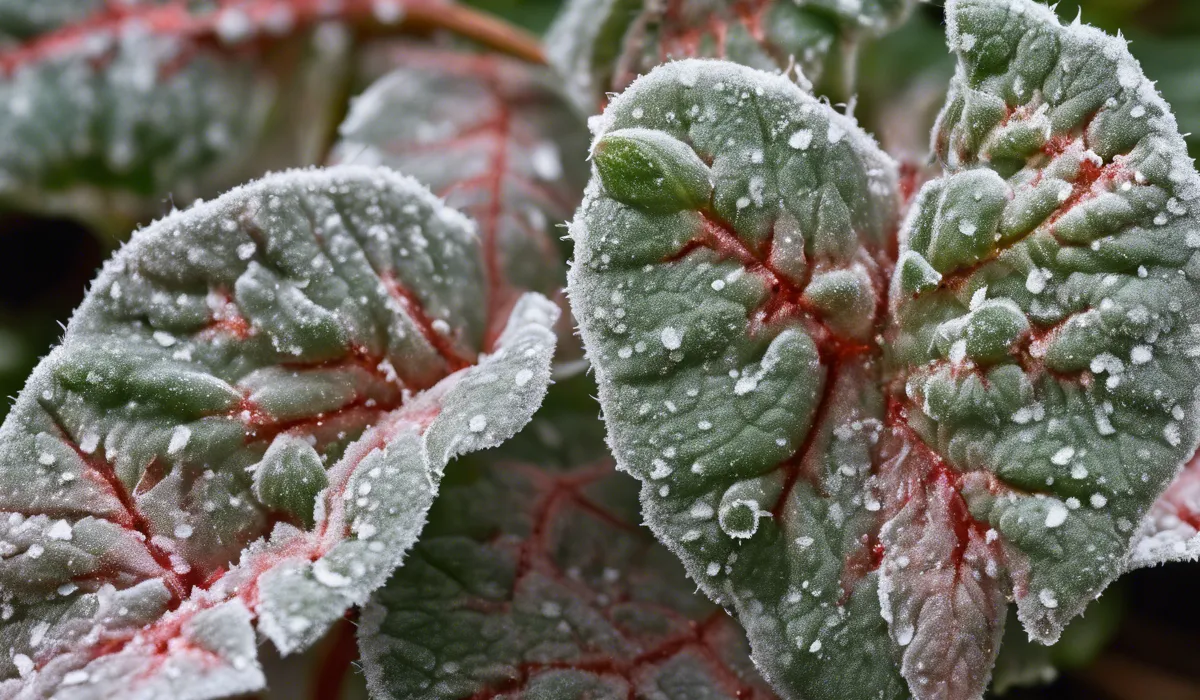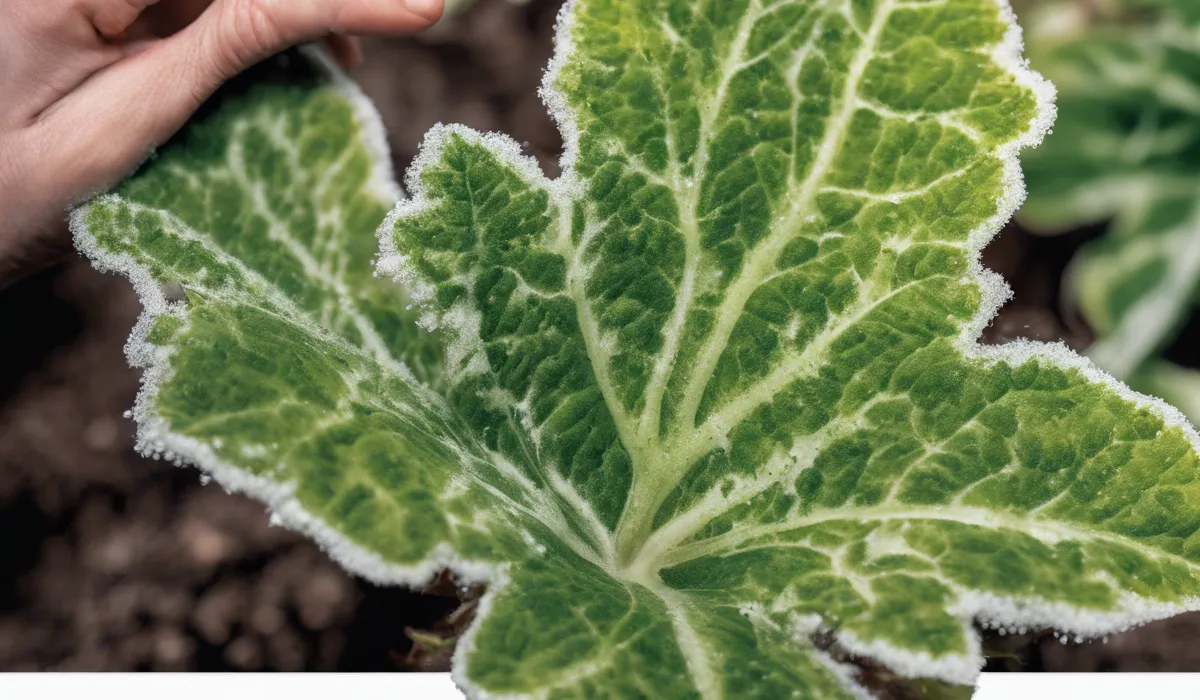Powdery mildew can kill a plant if left untreated, as it impairs photosynthesis and drains the plant’s resources. Severe infections stress the plant, leading to yellowing leaves, stunted growth, and eventually plant death.
Understanding Powdery Mildew and Its Effects on Plants

Definition of Powdery Mildew
Powdery mildew is a common plant disease caused by many different kinds of fungi. It appears as a white or gray powdery growth on the leaves and stems of plants.
This fungus can spread quickly and is found in many gardens and farms all over the world. It loves to live in warm areas with high humidity.
Various Types of Powdery Mildew Fungi
There are many species of fungi that cause powdery mildew. Some names you might hear are Erysiphe, Podosphaera, and Uncinula. Each type prefers different kinds of plants.
They all share the same goal: to grow on plants and spread their spores to other plants.
The Lifecycle of Powdery Mildew Fungus
The lifecycle of powdery mildew starts with spores that land on a plant. These spores grow and cover the plant’s surfaces with a powdery film.
The fungus sends out tiny threads that enter the plant and take nutrients. After growing, the fungus makes new spores that fly off to infect other plants.
Common Plant Species Affected by Powdery Mildew
Many plants can get powdery mildew. Some that often get sick are roses, grapes, cucumbers, and squashes.
Even trees like oaks and maples can be affected. If you have plants in your garden, it’s good to know which ones can get powdery mildew.
Symptoms of Powdery Mildew on Plants
When a plant has powdery mildew, you’ll see white or gray spots on the leaves. The spots can spread until they cover much of the leaf.
Sometimes the leaves turn yellow or brown and can twist or break. If you see these signs, your plant might have powdery mildew.
The Progression of the Disease on an Infected Plant
If powdery mildew is not stopped, it will keep growing. It starts with a few spots but can cover the whole plant.
Leaves can die and fall off. If the plant loses too many leaves, it can’t make food and might not survive.
Impact of Powdery Mildew on Plant Health

How Powdery Mildew Affects Photosynthesis and Plant Growth?
Plants need sunlight to make food, a process called photosynthesis. Powdery mildew covers leaves, blocking sunlight.
This makes it hard for the plant to make food, which can slow down growth or stop it completely. Plants that can’t grow well are weak and might not live long.
Potential for Defoliation and Its Consequences
Defoliation means losing leaves. When a plant has powdery mildew, the sick leaves can fall off.
A plant without enough leaves can’t make enough food, which is bad for the plant. No food means no growth, and the plant could die.
Impact on Fruit and Flower Production
Powdery mildew can stop plants from making fruits and flowers. This is bad for plants like tomatoes or apples that we grow for their fruits.
No flowers mean no fruits, and that means we won’t have anything to harvest.
Secondary Effects of Infection
A plant with powdery mildew is stressed and can get other sicknesses more easily. It’s like when we get a cold and then feel even worse because we catch the flu too.
Plants can get hit by bugs or other diseases on top of powdery mildew.
Conditions That Exacerbate the Severity of Powdery Mildew Damage
The damage from powdery mildew gets worse when the weather is warm and a bit wet. Not too much rain though, because the spores don’t like getting wet.
Also, if plants are too close together, it’s easier for the fungus to spread from one plant to another.
Management and Control of Powdery Mildew to Prevent Plant Death

Cultural Practices for Prevention and Control
Keeping plants healthy is the best way to fight powdery mildew. Make sure they have enough space for air to move around.
Prune your plants to keep them open and airy. Clean up any dead leaves or parts because they can hold fungus spores.
Importance of Selecting Resistant Plant Varieties
Some plants are tough and can fight off powdery mildew better than others. When you choose plants for your garden, look for the ones that say they are resistant to powdery mildew.
This means they have a natural way to keep the fungus away.
Appropriate Watering Techniques and Environmental Control
Water your plants the right way to stop powdery mildew. Water in the morning so leaves can dry during the day.
Try to water the soil, not the leaves. If you can control the environment, like in a greenhouse, keep the air moving and reduce humidity.
Chemical Treatments and Their Application
There are chemicals that can kill powdery mildew. But you must use them carefully. Always read the instructions and follow them.
It’s best to use them when you first see the mildew, and you might need to apply them more than once.
Organic and Home Remedies for Mildew Control
You don’t always need chemicals. Some people use baking soda mixed with water to spray on plants. Others use milk or vinegar.
These home remedies can help, but you have to keep using them and start as soon as you see the mildew.
Monitoring and Early Detection Strategies
The best way to keep plants safe is to watch them closely. Look for the first signs of powdery mildew.
If you catch it early, you can stop it before it spreads. Checking your plants often and acting quickly can save them from dying.
FAQs About Powdery Mildew and Plant Health
Can powdery mildew actually kill a plant?
Yes, powdery mildew can kill a plant if it’s left untreated, as it significantly hinders the plant’s ability to perform photosynthesis and depletes its resources.
What are the signs of a severe powdery mildew infection?
A severe powdery mildew infection may cause leaves to turn yellow, stunt the plant’s growth, and if not addressed, lead to the plant’s death.
How does powdery mildew impair a plant’s health?
Powdery mildew impairs a plant’s health by obstructing photosynthesis and draining the plant’s energy, which is vital for growth and resilience.
Is it possible to save a plant from powdery mildew?
Yes, it is possible to save a plant from powdery mildew by applying appropriate treatments promptly to control the spread of the fungus.
What should I do if I notice powdery mildew on my plants?
If you notice powdery mildew on your plants, you should treat the affected areas with fungicides or natural remedies and improve air circulation around the plants to prevent further infection.
Final Thoughts
Powdery mildew poses a significant threat to plant health, potentially leading to plant death if not addressed.
It disrupts photosynthesis and depletes the plant’s resources, causing symptoms such as yellow leaves and stunted growth.
Early intervention is essential to prevent severe damage and ensure the survival of the affected plant.
